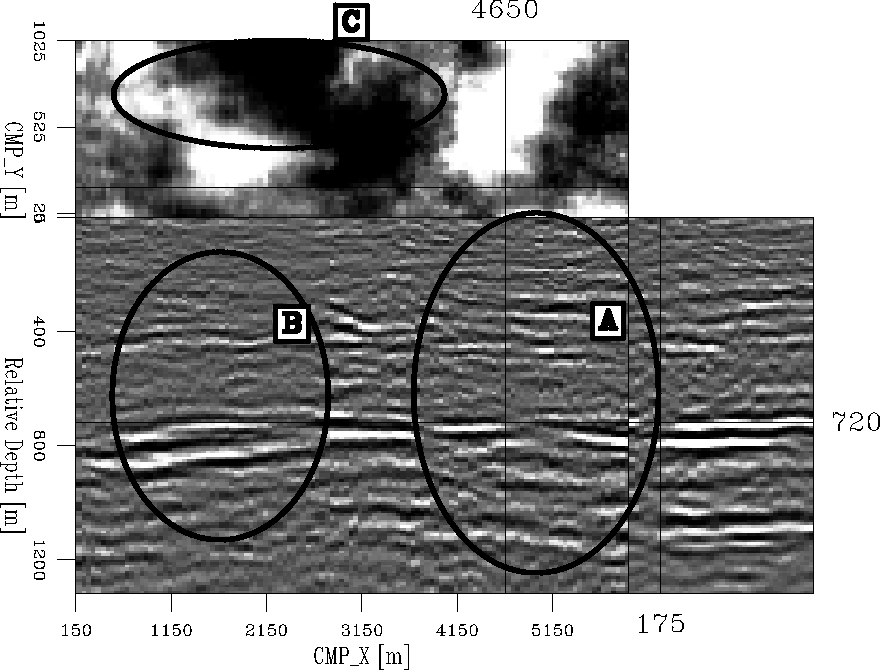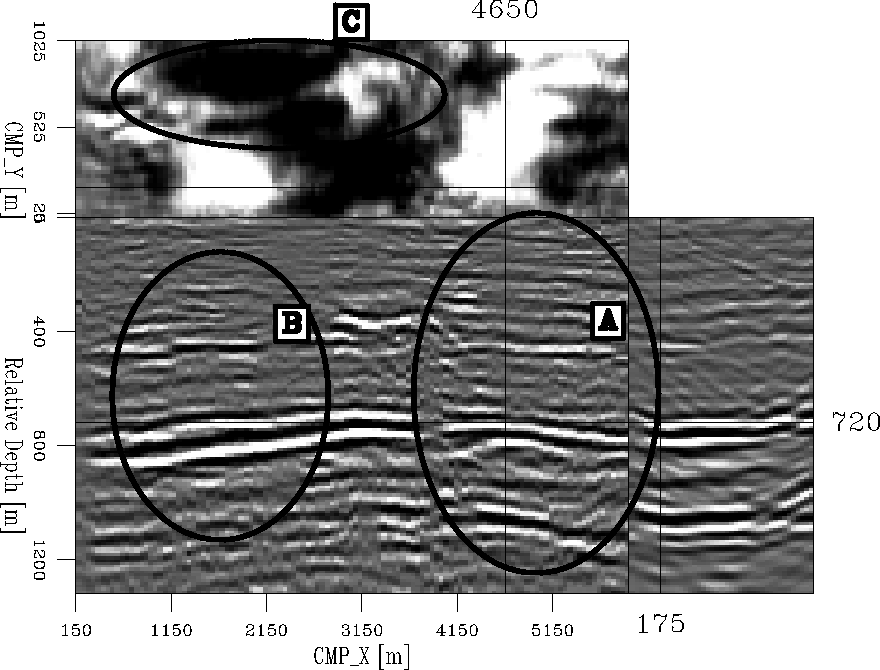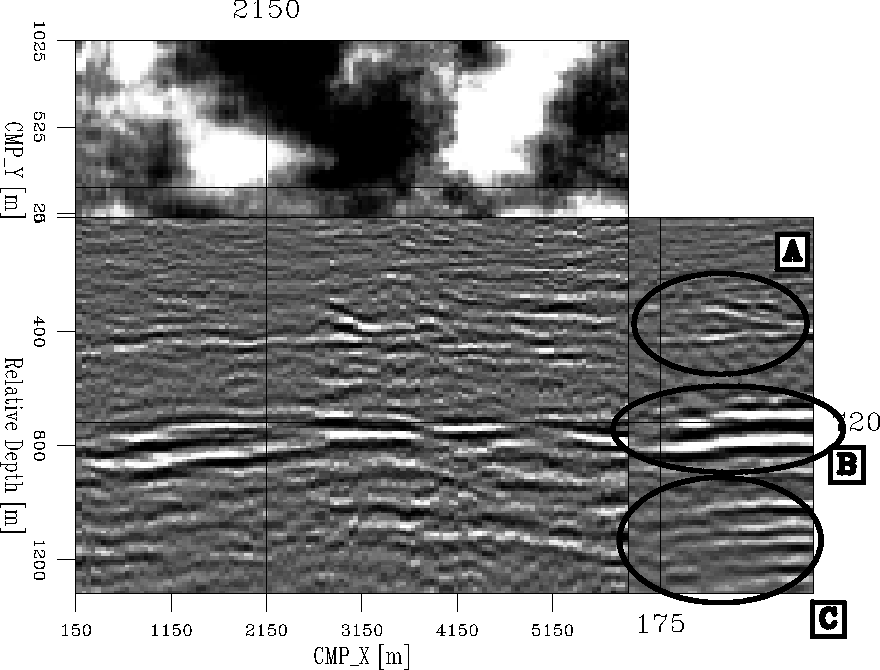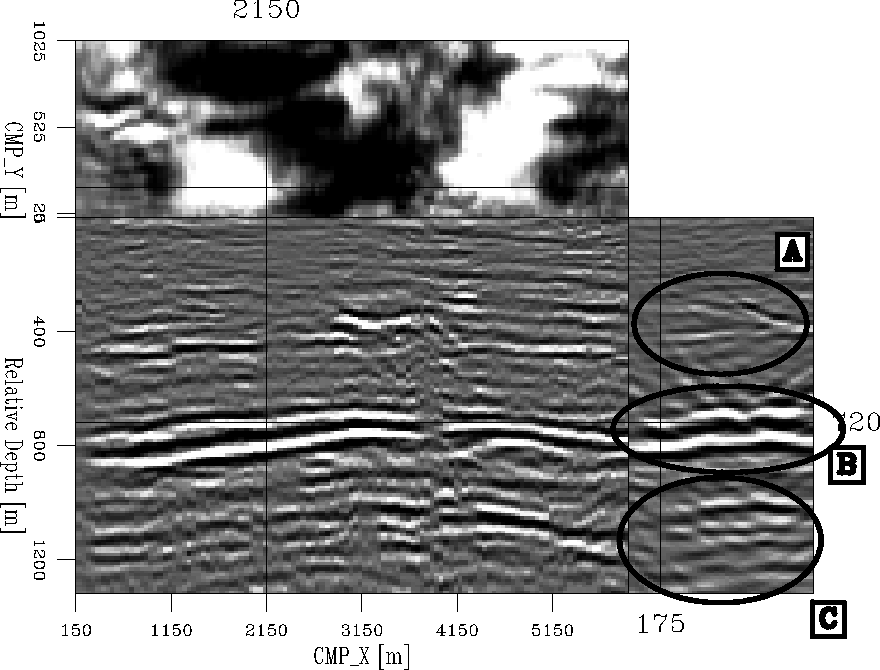




Next: Discussion and Conclusions
Up: Rosales et al.: PS-CAM
Previous: PS common-azimuth migration
We use a portion of the real data set
from the Ocean Bottom Seismograph (OBS) acquisition
above the Alba oil field.
The Alba oil field is located in the UK North Sea and
elongates along a NW-SE axis. The oil reservoir is 9 km
long, 1.5 km wide, and up to
90 m thick subsea Newton and Flanagan (1993).
The 3-D OBS data set has been already preprocessed and
separated into a PP and a PS section.
The subset of the data set consists of 250 inline CMPs,
50 crossline CMPs, 200 inline half-offset, and 40
crossline half-offset.
This section compares the result of the
traditional method with the proposed method.
The traditional method uses Normal moveout plus stacking to obtain
the common-azimuth data cube, followed by PS common-azimuth migration,
we refer to this method as PS-NoMoRe.
The proposed method uses the data regularized using PS-AMO
followed by PS common-azimuth migration, we refer to this method as PS-AMORe.
Figure 2
shows the first comparison between the PS-NoMoRe result (left) and
the PS-AMORe result (right). From top to bottom four depth slices at
300, 400, 500, 600 m. Note that the
acquisition artifacts are stronger in the PS-NoMoRe result
than in the PS-AMORe result. At a depth of 600 m the
acquisition artifacts are no longer present in the
PS-AMORe result.
ps_zslice_comp2
Figure 2 Comparison
for several depth slices, of the PS-NoMoRe result (left) and
the PS-AMORe result (right). Note how the acquisition artifacts
are healed in after the PS-AMO correction and they are gone
at a shallower depth with respect to the NMO correction.





The following results and comparison focus between the
relative depths from m and 1300 m.
Figures 3 and 4
correspond to the PS-NoMoRe and the PS-AMORe results, respectively.
The ovals marked as ``A'' in the inlines present events
that are stronger in the PS-AMORe
result and are not present in the PS-NoMoRe result. Note first at the
very top of the ovals that the reflectors are more clearly defined after PS-AMORe.
Right underneath the mark ``A'' inside the ovals there is an event
in the PS-AMORe result that can not
be followed in the PS-NoMoRe result. The same can be said about the
main event at depth 720 right where the inline and crossline
sections intersect. The ovals marked as ``B'' also presents
more continuity in the events using PS-AMORe,
primarily the
event at a depth of 720 m. The ovals marked as
``C'' in the depth slices shows a channel in the PS-AMORe
result that is not clear using PS-NoMoRe.
ps_migstk_4_ant
Figure 3 3-D image displayed
with depth slice at 720 m, inline section from crossline=175 m,
and crossline section from inline=4650 m. This result corresponds
to the PS-NoMoRe process.




 ps_amostk2_4_ant
ps_amostk2_4_ant
Figure 4 3-D image displayed
with depth slice at 720 m, inline section from crossline=175 m,
and crossline section from inline=4650 m. This result corresponds
to the PS-AMORe process.





Figures 5 and 6
show other sections on the PS-NoMoRe result and
the PS-AMORe result, respectively.
The geological feature marked by ovals ``A'' is better
defined in the PS-AMORe result than in the PS-NoMoRe result.
At the reservoir level, the ovals marked as ``B'' and ``C'' show
the reservoir with better horizontal continuity and stronger
amplitude after PS-AMORe process.
ps_migstk_5_ant
Figure 5 3-D image displayed
with depth slice at 720 m, inline section from crossline=175 m,
and crossline section from inline=2150 m. This result corresponds
to the PS-NoMoRe process.




 ps_amostk2_5_ant
ps_amostk2_5_ant
Figure 6 3-D image displayed
with depth slice at 720 m, inline section from crossline=175 m,
and crossline section from inline=2150 m. This result corresponds
to the PS-AMORe process.










Next: Discussion and Conclusions
Up: Rosales et al.: PS-CAM
Previous: PS common-azimuth migration
Stanford Exploration Project
1/16/2007




